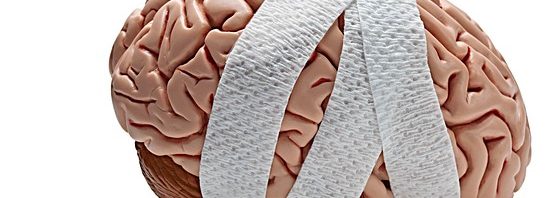Concussions are a not well-understood invisible injury that has no boundaries on who it can affect. A concussion may be caused by a blow, bump or jolt to the head, or by any fall or hit that jars the brain. This invisible injury disrupts the way the brain normally works by affecting mental stamina, as the brain must work longer and harder even to complete simple tasks.
Recently, researchers have figured out the neurochemical cascade that occurs in the brain after a concussion:
- There is depolarization in the cell and release of high amounts of excitatory neurotransmittors.
- Potassium is brought out the cells and Calcium is rushed in causing an imbalance (Hypermetabolism).
- Increased activity of ATPase and a decreased production of ATP (Energy Crisis).
- Axolemmal disruption, axonal swelling and possible apoptosis.
- To much stored Calcium, no ATP for energy, no activity Hypometabolism).
This cascade shows us why patients are very tired, but also that sleep is very important to a concussed person. The Hypometabolism stage shows us why second impact syndrome is so bad, because if you receive another concussion in this state there are no chemicals of energy left to start this cascade over again.
Concussions are serious brain injuries that have a significant influence on the brain’s ability to function at its normal capacity. The key to recovery from a concussion is both physical and mental rest, followed by a gradual progression back to activity, both in athletics and in the classroom.

Concussion symptoms can have a significant impact on classroom learning and schoolwork. Physical symptoms may interfere with the student’s ability to focus and concentrate, while cognitive symptoms may impact the ability of the student to learn, memorize and process information, as well as keep track of assignments and tests. Struggles with school work may worsen the frustration, nervousness and irritability that were originally caused by changes in brain chemistry.
No two concussions are exactly the same so individualized treatment is necessary. Developing brains are highly variable; so one student’s symptoms may be completely different, and therefore, some students may need to miss school to help heal for varying amounts of time, while others will be able to continue their work with some accommodations.
Nationwide Children’s has come up with a 5 step plan for teachers to understand when helping a concussed student through school work.
- No School: Rest with no activity, screen time and healthy meals are key to begin the healing process
- Half-day Attendance with Accommodations: Accommodations may be limited homework and reschedule tests.
- Full-day Attendance with Accommodations: Accommodations may be breaks in between classes.
- Full-day Attendance, No Accommodations. No activity is allowed yet, full class load is allowed.
- Full-day and Extracurricular Activities.
A concussed student needs to hear from educators that they understand what a concussion is and what the student may be experiencing. The student needs reassurance that he or she will not fail classes because of missed school days and homework. This sympathy, understanding and consistency from all parties involved will help to decrease stress, and in turn, help with recovery.
